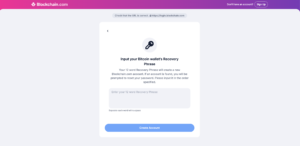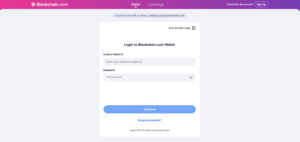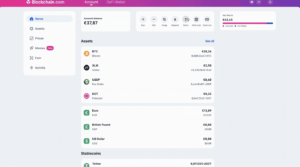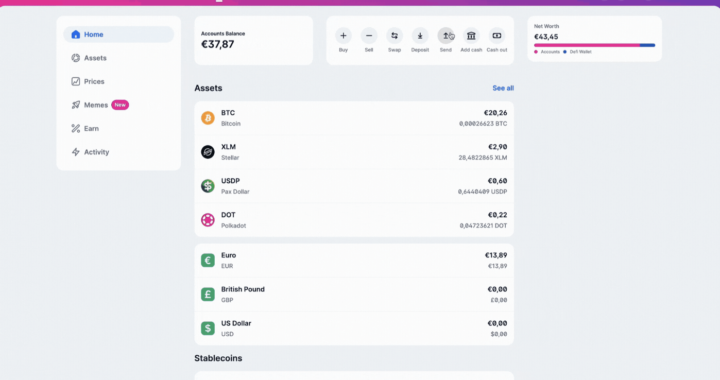1. Why Blockchain.com’s Setups Can Trip You Up

1.1 The Blockchain “Wallet ID”
Think of this as your username—just an long string of letters and numbers. Confusion typically sets in when people assume a “Wallet ID” is the same as a private key or public address. It’s not. Think of it more like a user handle, tied to your email in Blockchain.com’s servers.
1.2 Passwords & (Sometimes) a Second Password
Blockchain.com’s standard policy:
- Primary Password: Used to log in.
- Second Password (older wallets only till 2020): A failsafe for sending crypto out. If you lose it, your BTC is effectively stuck.
- Seed Phrase: The 12-word phrase (can be longer for wallets before 2016) that can restore your non-custodial wallet if you lose the above.
But here’s the kicker: Blockchain.com doesn’t store your password data. They literally can’t provide it if you forget.

2. Three Key Elements to Keep Straight
- Wallet ID: Random string that works like a username.
- Recovery Phrase: A set of 12 words (or sometimes an older variant if you signed up pre-2016).
- Password(s): Could be one or two depending on your wallet’s age—both mandatory for sending crypto.
Lose all three and your money’s as good as gone, sorry to say.
3. Blockchain.com Recovery Methods: Lost Password, Misplaced Seed Phrase, Json File

3.1 Lost or Forgotten Primary Password
Scenario: You can’t log in to your Blockchain.com account at all.
- Step One: Hit “Forgot Password.” You’ll get a reset link via the email tied to your wallet.
- Step Two: If that fails or you no longer have access to your email, use your seed phrase. There’s an option on the login screen that says “Recover via 12 Word Recovery Phrase.” Type it carefully.
- Extra Tip: If you see “Invalid Recovery Phrase,” check for typos, missing words, or out-of-order words.
3.2 Lost Second Password (But Primary Password Works)
Scenario: You can log in fine but can’t send coins out because you forgot your second password.
- Option A: If you have a pre-2016 seed phrase, you can re-import your wallet into a fresh Blockchain.com account, which resets or bypasses the second password.
- Option B: If you’re drawing a blank, you can attempt partial guesses (common phrases, old pass patterns).
- Option C: If none of that works, a professional recovery service might brute-force the encrypted data on your behalf—if you can provide enough clues.
3.3 Misplaced or Damaged Seed Phrase
Scenario: You might remember some words, but you’re missing a few or the order is scrambled.
- DIY Attempt: Tools exist that can guess missing words if you at least know which words in the BIP39 dictionary might be correct. But it’s complicated.
- Call in the Cavalry: Recovery professionals can systematically test variations. If you only have half your seed, that’s still potentially enough to feed a partial dictionary attack.
3.4 “Invalid” or “Corrupted” Recovery Phrase
Scenario: You typed everything right, but Blockchain.com still says your phrase is invalid. Possibly you’re mixing the old proprietary seed with the new BIP39 standard.
- Check the Year: If you created your wallet pre-2016, your “seed phrase” might differ from the 12-word BIP39. Maybe it’s a different length or uses words not recognized in BIP39.
- Migration: Some older users were given an option to migrate to a new BIP39 phrase. If you only have the old phrase, you might need professional help to interpret that data.
3.5 Lost Email Access
Scenario: You can’t reset your password because your associated email is gone.
- Workaround: Use the 12-word phrase to import your wallet. If that’s gone too? Yikes. Time to consult a pro.
- Wallet ID: If you at least recall your Wallet ID, you might still log in via your primary password. But typically you need email verification to confirm a new device.
4. No Info Whatsoever? That’s Tough Luck
Let’s face it: If you have zero recollection of your password, second password, seed phrase, or even your Wallet ID, nobody can magically conjure that data. Blockchain.com sure can’t—they don’t store your password. If you truly have no leads, your crypto is likely locked forever.
5. Why Blockchain.com Won’t Help (and Why That’s a Good Thing)
Self-custody is the name of the game. Blockchain.com actively chose not to maintain user passwords on their servers. This drastically reduces the risk of hackers cracking a central database and draining everyone’s funds. But it also means you can’t call their hotline for a password reset. It’s a trade-off: security vs. convenience.
6. When to Call in the “Pros”

If you’ve tried your best guesses, scoured your email for the Wallet ID, rummaged for old backup notes, and still no dice—then you might want to consider a crypto wallet recovery service. They can:
- Run specialized brute force scripts on your wallet file.
- Combine partial password or seed phrase data.
- Potentially fix corrupted
.aes.jsonfiles if you have them saved somewhere.
Just keep in mind, they usually need some piece of the puzzle to get started—like your partially remembered passphrase or an old snippet of the seed. No data, no chance.
Here’s the deal: The longer you wait, the more likely you’ll forget those last faint memories of your password or seed phrase. If you’re locked out of your Blockchain.com wallet, time is your enemy. Start today:
- Dig up any old notes, screenshots, or hints.
- Organize potential pass combos.
- Try the official methods: reset password, log in with seed, or re-import wallet.
- If all else fails, consider a reputable recovery service.
Make a plan, follow the steps, and reclaim your crypto before that password labyrinth grows even thicker with time. Good luck
Want more details? Head over to our blog for advanced tips and insights.

Leave a Reply